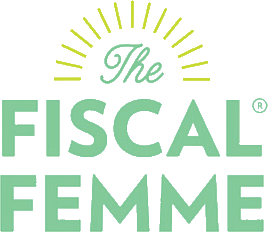Which Debt Should I Pay Off First?
You’re ready to make a plan to pay off your debt. First, you need to know what you have and where. I call this taking inventory of your debt. Next, you’ll prioritize your debt, or decide which debt you should pay off first.
Why can’t I prioritize all of my debt?
I get the feeling of wanting to prioritize it all. You want to pay down all of your debt so it’s hard to pick what comes first. When we don’t prioritize, we’re more likely to feel like we’re not making progress.
This is what it often looks like. You pay all of the minimums payments on each card or loan and then put a little extra towards every piece of debt you have. You feel like you should be making major headway, but your balances are only slowly creeping down each month. It doesn’t feel motivating.
When you prioritize one piece of debt at a time, you pay all of your minimum payments on each card or loan and then put all the extra toward your number one priority piece of debt. Number one on your list goes down by the entire additional amount each month. You are able to pay off your number one priority piece of debt in full much more quickly. You get to cross it off your list - and that feels so good!
How to decide - which debt should I pay off first?
I’m going to walk you through a few strategies to consider how to choose which debt to prioritize. As you read this, be sure to keep your motivation in mind. Think about which methods will work best for you.
You can stick with one method or use a combination of them.
The Interest rate method
Using the interest rate method, you’d prioritize paying down the debt with the highest interest rates first. The piece of debt with the highest interest rate is costing you the most money each month. Once you have taken inventory, it’s really easy to go through and prioritize your debt by interest rate. Start with the highest interest rate on the list and work your way down.
The Snowball Method
Using the snowball method, you’d prioritize paying down the debt with the smallest balances first. This method plays to our motivation. Paying off a piece of debt with a low balance takes less time and can feel a lot less overwhelming than paying off a piece of debt with a larger balance. You get a quick win and can cross a piece of debt off of your list.
The Emotional method
This is a method I added to the list after speaking with so many people who had a piece of debt that caused them emotional stress. This could be money we owe to a family member where we don’t pay interest but it really bothers us to have it hanging over our head. Perhaps you have debt with a certain bank with which you’ve had a terrible experience. Sometimes, it’s most beneficial to prioritize the debt that’s causing the most emotional stress regardless of interest rate or size of debt.
Which debt pay off method should I choose?
We can choose one method or a combination of them. Sometimes the smallest balances also have the highest interest rates. Sometimes the interest rates are comparable, but one balance is much bigger than the other. You might not have a piece of debt that causes you more emotional stress than others.
Look through each piece of debt and see which priority order works best for you. Remember to keep your motivation in mind. If you think completely paying off the debt with the smallest balance will motivate you the most, the snowball method might be the fastest way for you to become debt-free.
List your debts in order of priority in your Debt Inventory Tracker. This list will be incredibly helpful, even if you adjust the order over time.
Put your debt pay off plan into action.
Now that you have your debt ranked in order of priority, it’s time to put your plan into action. Each month, pay the minimums on your credit cards and the required loan payments on all other pieces of debt. Any additional money you put towards debt will go towards the top priority piece of debt on your list.
Once that number one priority piece of debt is paid off, you can move to number two on your list. Your plan will be able to pick up steam because the minimum payment you were paying on piece of debt number one can be added to your additional contributions toward the number two debt on your list.
For example, let’s say in addition to your minimum payments, you put $200 towards your debt each month. You pay off number one on your list which is a credit card with a minimum payment of $100. You no longer have to make that $100 per month minimum payment - woohoo!
You can now contribute $300 towards your debt in addition to your minimum payments. This amount will increase with each piece of debt you pay off and your debt will decrease more and more quickly.
You are now ready to put together a plan to pay off your debt. Make sure to track your current balances each month so you can see how much progress you’ve made. This is a great way to stay motivated! Think of ways to celebrate as you hit milestones along the way. You can even play the Money Game to find more money to put towards your debt.


